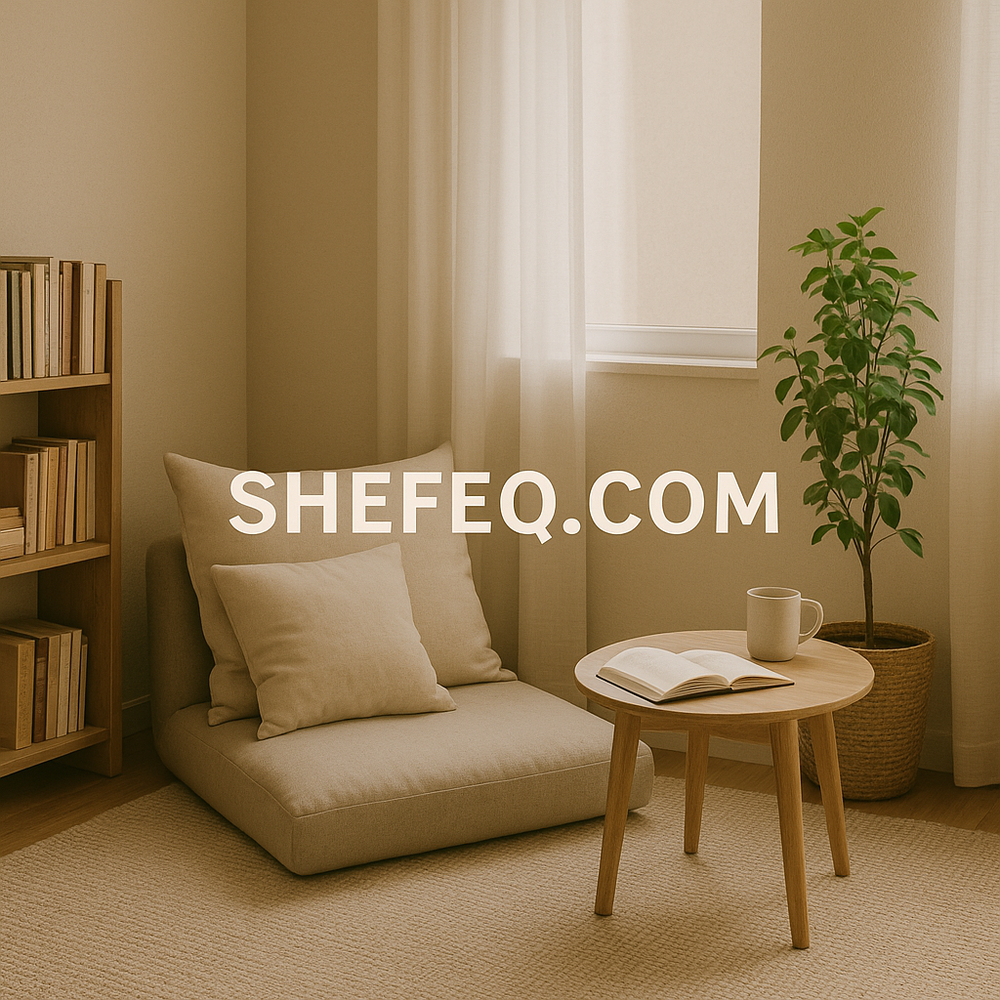Introduction
In the fast-paced rhythm of modern life, everyone needs to listen to their inner voice, calm down, and return to themselves. The invisible flood of information and technology-saturated lifestyle exhausts human psychology, physical, and spiritual energy. At this point, the concept of a "quiet corner at home" comes to the forefront. A quiet corner is not just a physical space—it is a bridge that leads to a person’s inner world, a place of rest and spiritual renewal.
This article will explain the importance of having a quiet corner at home from social, academic, societal, and research perspectives. Using various examples, psychological insights, and scientific studies, it offers a deep analysis with the aim of familiarizing the reader with this concept both theoretically and practically.
I. Social Aspect: Inner Balance and Family Harmony
1.1. The Role of a Quiet Corner in Family Life
A quiet corner serves as a preventive tool against emotional outbursts, stress, and misunderstandings within the family. Every individual having a space they feel is “theirs” within the household enhances self-regulation, calmness, and self-expression. Psychologists note that individuals with personal quiet zones tend to be less aggressive and more empathetic.
1.2. Benefits for Children
Such a space is invaluable for children’s development. They can read, draw, play, or simply think in this corner. It gives them a sense of space, security, and promotes independent activity habits.
II. Academic Aspect: Focus and Intellectual Performance
2.1. Optimal Environment for Learners
A quiet corner provides an ideal setting for students and pupils to study, research, and write. Noise and social media distractions reduce cognitive productivity. That’s why many universities and experts recommend creating well-lit, temperature-regulated quiet zones at home.
2.2. Stimulating Creativity
For writers, artists, and composers, inspiration is often born in solitude and silence. Many famous creatives had their own “creative corners.” Having such a space at home supports a sustainable and productive creative process.
III. Societal Aspect: Human Well-being and Personal Boundaries
3.1. Protection of Personal Boundaries
When no one has their own space at home, personal boundaries can be violated. This leads to emotional overload, irritability, and strained relationships. A quiet corner helps individuals feel a sense of privacy and maintain their boundaries.
3.2. Continuation of Cultural Values and Spiritual Growth
Historically, Eastern homes featured quiet corners—such as the “conversation room” or “reading nook.” In these spaces, elders would pray and the youth would read. These traditions highlight the role of silence in human development.
IV. Research Aspect: Psychological and Biological Benefits
4.1. Psychological Impact: Reduction of Anxiety
Studies show that 15–30 minutes of daily solitude significantly lowers anxiety levels. Whether through meditation, prayer, or simple relaxation, such corners calm the nervous system and reduce cortisol levels.
4.2. Impact on Sleep Quality
Spending 20 minutes in a quiet corner at the end of the day helps the body more effectively receive sleep signals. This increases melatonin production and supports a healthy sleep cycle.
4.3. Boosts Creativity and Problem Solving
Quiet spaces are vital for thinking and decision-making. Inner dialogue and reflection happen in silence—essential for making sound personal and professional decisions.
V. Practical Section: How to Create a Quiet Corner at Home
5.1. Physical Requirements
-
Lighting: Should include natural light supported by soft artificial lighting.
-
Colors: Neutral and light tones psychologically induce calmness.
-
Furniture: A comfortable chair, cushions, a small table, or bookshelf—minimal yet functional.
-
Soundproofing: A closed room or a curtain-divided area helps ensure silence.
5.2. Emotional Components
-
Personal items: A painting, a favorite scent, family photos, or inspiring quotes.
-
Plants: The calming effects of greenery and oxygen have been scientifically proven.
-
Scent and music: Natural scents like lavender or yuzu, and soft background music.
VI. Applications for Special Groups
6.1. For the Elderly
As we age, the need for quiet increases. For older individuals, this corner can serve as a place for peace and nostalgic reflection.
6.2. For Working Individuals
For people working from home, this space can serve as both a productivity zone and a relaxation area—ideal for focus and energy renewal.
VII. Future Trends of the Quiet Corner
Modern architecture increasingly incorporates quiet corners—often labeled as “zen corners,” “wellness spaces,” or “meditation zones.” Integrated with smart technologies, these corners may include automated background music, lighting, and aroma diffusers.
VIII. Conclusion: A Doorway Inward
A quiet corner at home is more than just a physical spot. It is a meeting place with the self—a place where time pauses, breath deepens, and the soul speaks. This corner protects us from the chaos of modern life and offers a rebirth through tranquility.
In short, creating a quiet corner at home is one of the most beautiful gifts we can give ourselves.
Question and Feedback Section:
Have you created a quiet corner at home? What does it include?
What does silence mean to you?
Share your thoughts with us at shefeq.com!

